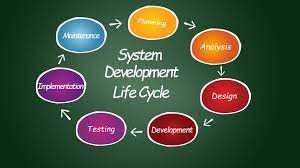System Integration: Types, Approaches, and Implementation Steps

In IT, system integration is a complex process that requires careful planning. System integration is the act of integrating multiple computer systems and software applications into one seamless system.
This may involve numerous changes and upgrades, including new hardware and software installation, data migration or conversion between different programs, or merging two other businesses’ databases into one extensive database with unified access points.
What is System Integration?
System integration is a process of combining two or more systems into one. It involves different teams, technologies, and data sources that perform various organizational functions. System integration can be achieved through various approaches, such as systematic design, incremental steps, or IT system integrators.
System integration aims to achieve better performance and efficiency by connecting unrelated organizational processes. To do this, you need to understand which systems are secured so they can work together efficiently.
Types of System Integration
- Technical System Integration: This type of system integration occurs when two or more systems are combined to achieve a common goal. It can be done on a single system level or across multiple systems and may involve internal or external systems.
The most common example of technical system integration is when an existing application is integrated with new hardware (for example, upgrading an old computer to its newer version).
- Business Process System Integration: This system integration combines two or more business processes into one seamless process across multiple departments, divisions, and/or sites within a company. For example, suppose Company A wants to sell products through Company B’s website but doesn’t have the technical expertise needed for this task.
In that case, it might hire someone to perform this task for them using business process system integration techniques such as IIA (Industrial Internet Application), which are software tools used by IT professionals who want their own companies’ workflows connected via APIs so that they can build customized portals without needing any programming experience at all!
System Integration Approaches
There are many systems integration approaches, and your approach depends on your business needs and the complexity of your project. The waterfall approach is used in large projects with no room for error; it has a defined sequence of steps that runs from start to finish before going to the next step.
The agile approach allows teams to work independently while still coordinating with each other as needed. You can also use an iterative or parallel model.
With an iterative model, you’ll break up your project into smaller chunks so that each chunk can be managed more easily; with a parallel model, multiple teams will work simultaneously on different parts of your system to finish them faster.
The Implementation Process
When you think about the implementation process, it’s important to note that there are many stages. You need to identify each of these stages and understand what’s involved in them. This will help you plan how you will implement your new system. The following is an overview of the steps involved in a typical implementation process.
- Plan– The first step is to define your project goals, objectives, and scope. These are the foundation for all other planning activities during your project lifecycle. You should also develop a detailed work breakdown structure (WBS) that defines all required tasks within each project life cycle phase.
- Design– Once you have completed planning and have identified all required tasks for each phase of your system integration implementation project, you can begin designing how those tasks will be accomplished within each phase or stage of your project life cycle.
Conclusion
System integration is a complex process that requires careful planning, but you can achieve the integration process successfully with the help of IT system integrators. However, it’s essential to keep in mind that there are many types of system integration, and each one has its requirements and challenges. System integration approaches also vary depending on the size of your company, resources available, and costs required for implementation.





